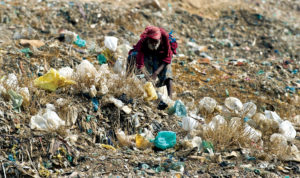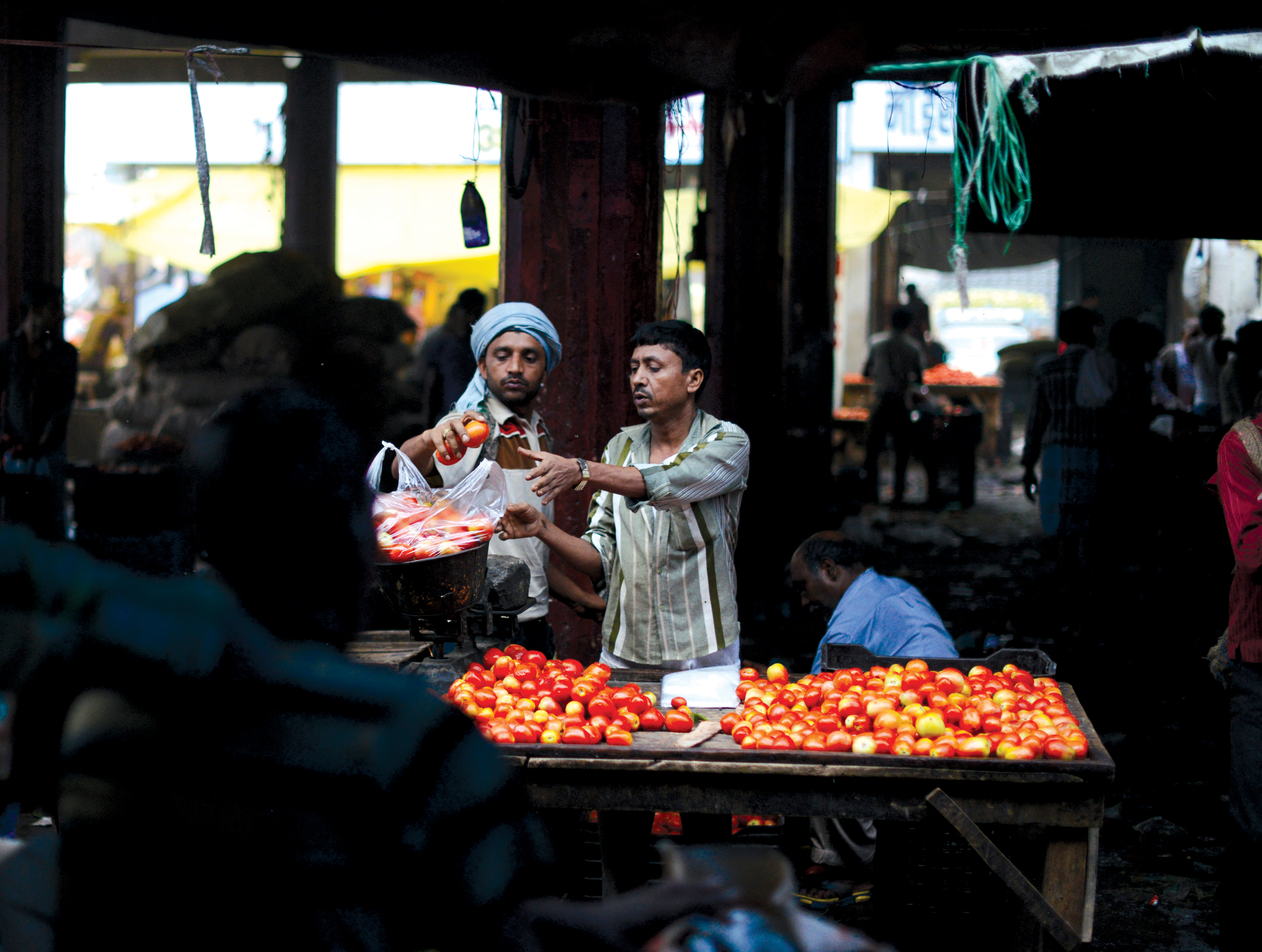…Delhi contributes the highest amount of plastic waste amongst all metro cities. Patriot explores what contributes to the menace
When vendors in Sadar Bazar, Sabzi Mandi Azadpur and Ghazipur were slapped with a fine of approximately Rs 1 crore by the Delhi Pollution Control Committee, authorities were reported as saying that zero tolerance will be shown towards use of plastic bags.
However, polythene can be seen everywhere and is being distributed amongst the public even today. It will come as a surprise to most readers that plastic bags were banned in the Capital in 2009, as their visibility in public places is as evident as ever even today.
“Ab kya karein bhaiya? Log hi jab koi aur material ka bag nahi layenge toh sabne plastic hi toh istimaal karna hain,” says Brijesh Kumar, a street vegetable vendor who puts up his stall in an East Delhi market. (Now what to do brother? When people will not bring their own bags then everyone will use plastic only).
Kumar says that time and again he has stopped packing vegetables in plastic bags “because of the ban, but when a customer asks for a bag, I have to re-think and stock them, else the customer won’t come next time.” This is the situation which generally prevails in most markets of Delhi.
The Delhi government in 2015, put a blanket ban on use of plastic carrybags across the city. Polythene bags whose thickness is less than 50 microns were banned.
For some time in 2017, these plastic bags were rarely seen in the markets, because the National Green Tribunal imposed a penalty of Rs 5,000 on each offender found selling or using the polythene bags. This is a compensation levied for the damage these bags do to the environment.
However, the infamous polythene bags came flowing again in the market months after the crackdown.
Last year alone, the Delhi government and the civic agencies seized more than 30,000 kg of banned polythene bags. Since these bags carry a tag of “non-recyclable,” the current process is to dispose them at waste-to-energy plants in the Capital.
An official from South Delhi Municipal Corporation who spoke on the condition of anonymity says “there is no other option beside disposing these polythene bags in the plants. We all know that any bag which is less than 50 microns is non-recyclable in most cases.”
It’s not just plastic polythene bags which have contributed to the plastic menace in the Capital. Other culprits are plastic packaged consumer products, packaged food material, plastic bottles and so on.
According to Central Pollution Control Board (CPCB), India generates 25,940 tonnes of plastic waste every day, of which 40% is not recycled. Delhi tops among metropolitan cities with a total of 689 tonnes of plastic waste generated every day. Cities like Chennai, Kolkata and Mumbai generate plastic waste in the bracket of 400-430 tonnes per day.
CPCB also conducted a study in 60 major metro cities, and found that major cities contribute in total 4,059 tonnes of plastic waste in a day. The country aims to eliminate single-use plastic by 2022.

In its study, the CPCB found that the Municipal Solid Waste (MSW) generated in cities like Delhi, Meerut, Faridabad and Chandigarh, is collected from door to door and community bin at street corners are dumped in the open dump yard.
In Delhi, the quantity of plastic waste was assessed at 10.14%, which comprised of 76% HDPE/LDPE, 7% PVC and 10% polystyrene. These materials are plastic bags, food containers, shopping bags, bottles, plastic films and sheets.
The study mentioned: “It has been observed no post treatment operation for MSW is carried out in the city and 100% of MSW is dumped as land-filling.” It added that “the compost fertiliser plant having the capacity of about 500 MT was established in the city, but currently the plant produces an output of about only 200 MT.”
The study also points out that the ragpickers in the city were “voluntarily collecting the valuable plastics waste that was generated throughout the day.”
In June, this year, the National Green Tribunal (NGT) informed the CPCB to strictly implement ban on import of plastic waste in the country, so that the Plastic Waste Management Rules 2016 is respected and followed.
The CPCB informed the tribunal that there has to be a total restriction on plastic waste being imported in the country. The figure is 26,000 tonnes a day.
Delhi also has many recycling units, which are a dumping ground for big chunks of imported scrap. It is reported that Delhi gets waste from the Middle East, Germany, Singapore and the US on a daily basis.
These shops then recycle the plastic waste material into something which is saleable. Ragpickers are part of this economy, as they segregate waste and then sell it to the next party, who would then turn the plastic material into slippers.
While the Capital has landfill sites in Bhalswa, Gazipur, Okhla and Narela, all these sites are saturated — some reached full capacity years ago.
Dr Rekha Singh, an expert on municipal waste who has worked in over 35 countries dealing with waste management says, “Delhi is worst in waste management in my opinion. The Municipal Corporation vehicles which come to neighbourhoods don’t have two separate bins. The very first requirement of waste management — segregation is not done. So what’s the use of household segregation.”
“If you go to any other city like Bhopal, each vehicle has two bins — green and blue. We live in the Capital city and you don’t see any sight of a solid waste collection vehicle with two separate bins,” she tells.
She also says that the country is “intellectual in making laws but implementation wise it’s zero.” “The kabbadiwalas are doing the work, because they’re are making money, at least they are picking the waste. If 5-10% of work is done, it’s only because of these sellers,” says Dr. Singh.
“No one can stop you if you are committed to implement waste management. You can see spitting at railway stations but have you seen spitting at Metro stations? The same people go there also,” says Dr Singh.
She says that the “corporations don’t have a segregation system in place. If people are not segregating the waste at source, then it’s also not getting segregated at those dumping sites.”
Giving an example of the Bandhwari landfill site in Gurugram, Singh says, “The DPR (Detailed Project Report) proposed how a landfill site is prepared.” She continues: “From three sides there should low polythene sheet. Lining will prevent leaching into the groundwater. There should be a STP (Sewage Treatment Plant), so that the liquid coming out from solid waste should be treated in STP and then it should be used within the site for horticulture purpose.”
However, she says, if one visits that site, one would see that “all the polythene is flying in the air and the dumping is beyond the capacity of that site.”
“Nothing will get fixed until we see that Municipal Corporation vehicle with two separate bins for segregation,” concludes Dr. Singh.





